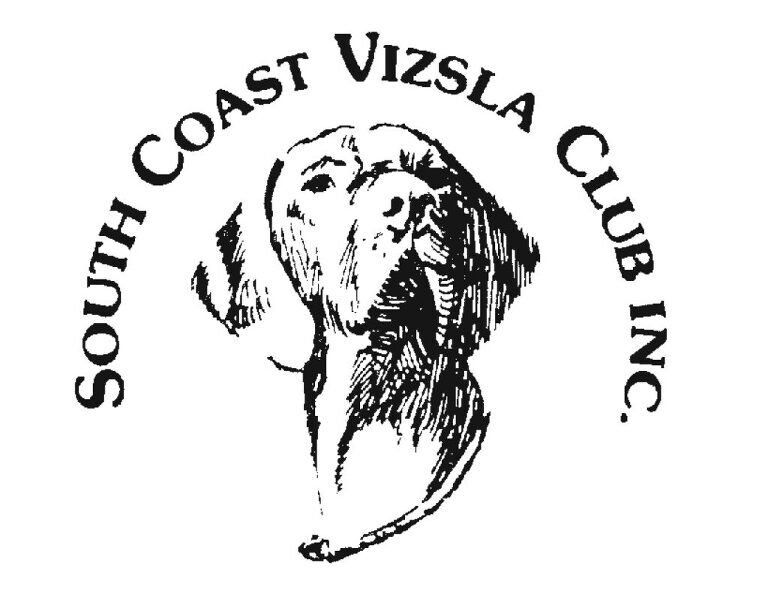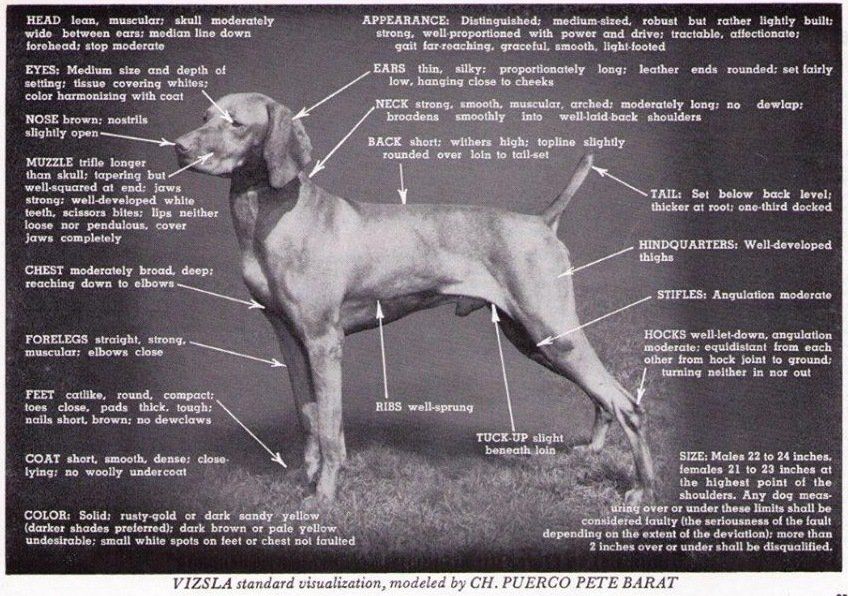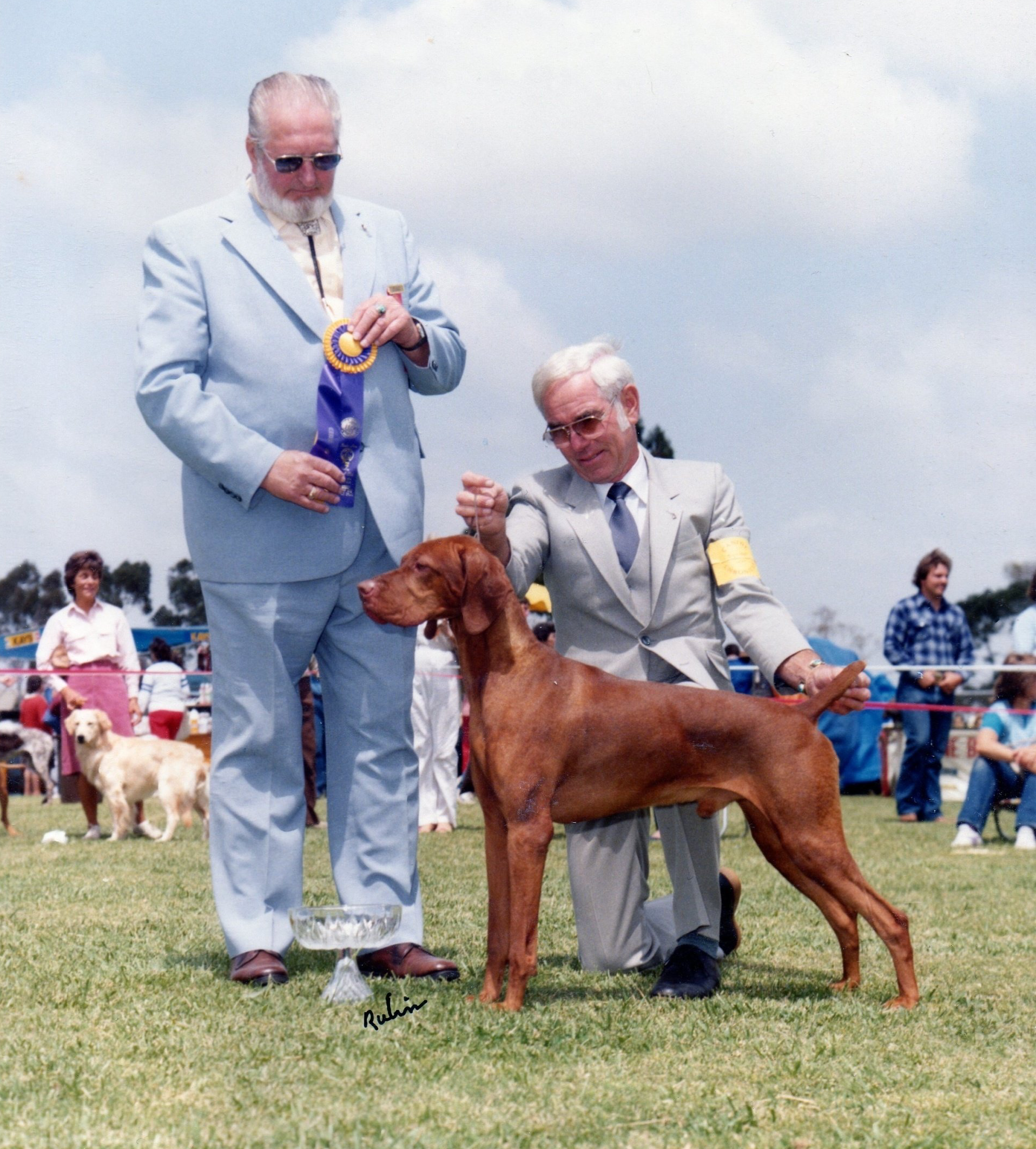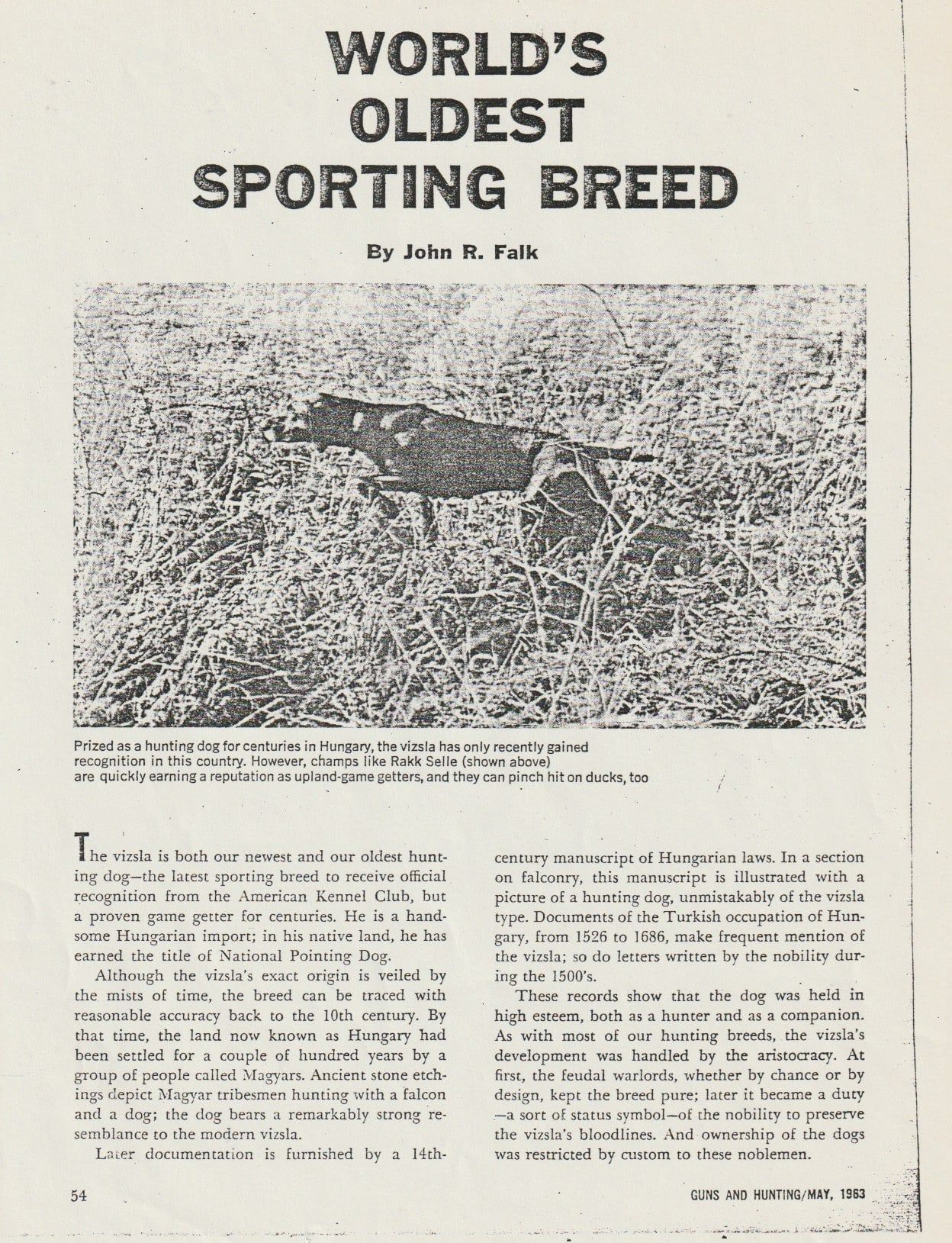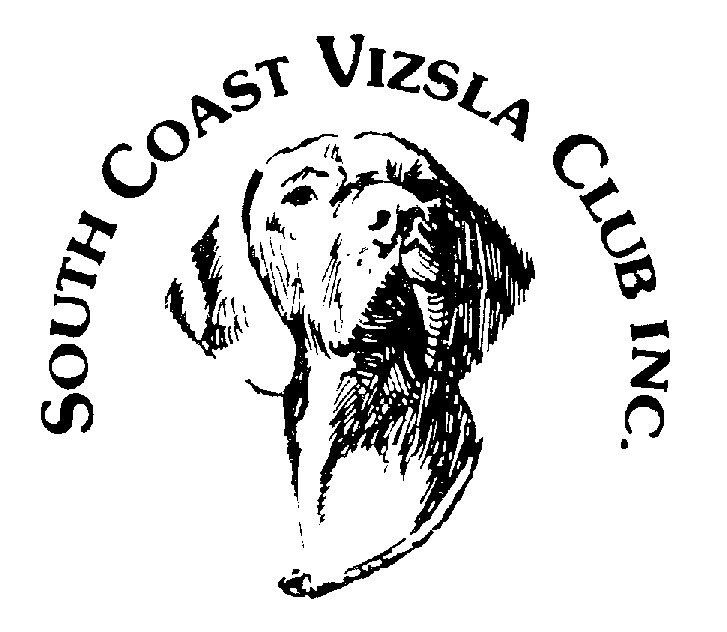AKC Vizsla Standard
Approved January 13, 2009
Effective April 1, 2009
Breed History
The Vizsla (a Hungarian word that means “pointer”) is considered one of the oldest-known hunting dogs.
Having faced near extinction twice, the Vizsla has a long and colorful history. The breed is most likely a descendant of eighth-century Hungarian hunting dogs. In primitive stone etchings, the Vizsla is seen alongside a hunter and his falcon. Over a thousand years ago, Magyar warriors, who lived in the Carpathian Basin, bred the ancestors of the modern Vizsla to match their cavalry’s speed and strength. Later, Vizslas were the companion dogs of the early warlords and barons. For centuries, the landowning aristocracy jealously guarded the Vizsla, preserving their pure blood while developing the hunting ability of these “yellow pointers,” identified by the golden-rust coloration from tip to tail.
Selectively bred for hundreds of years by Hungarian noblemen, the breed survived the Turkish Occupation (1526–1696) but suffered a serious decline after the Hungarian Civil War (1848–49). A careful search of Hungary and a poll of Hungarian sportsmen revealed only about a dozen true-type Vizslas still alive in the country. From that minimal stock, the breed recovered. However, after two World Wars and the Russian Occupation, Vizslas once again faced extinction but were saved, in part due to the valiant efforts of Mrs. Elizabeth Mihalyi.
Mihalyi, a noted portrait artist, escaped from Hungary to Austria, saving her family’s Vizsla, Panni XV, from the Russian armies. In Austria, Panni was bred to Betyar, establishing the Panni-Betyar line, which the American Kennel Club recognizes as part of the Vizsla’s foundation stock.
The Hungarian, or Magyar Vizsla, represents one of the best in sporting dogs and loyal companions and has a solid claim to being one of the smallest of the all-round pointer-retriever breeds. Size is one of the Vizsla’s most attractive characteristics. Through centuries, the breed has maintained a unique position for a sporting dog, that of a household companion and family dog. After a hunt, the Vizsla is not content to be put in the kennel with other dogs. Instead, this breed reaches full potential only when accepted as a family member.
The various “strains” of the Vizsla have become somewhat distinctive as individuals have bred stock that suited their hunting style. For many years, the Austro-Hungarian Empire extended its influence over a large area; but frequent border changes reduced Hungary to a mere shadow of its former self. As a result, owners of Vizslas suddenly found themselves living in Czechoslovakia, Romania, the former Yugoslavia, Italy, Germany, Poland, or Russia.
When the Vizsla started arriving in the United States at the close of World War II, interest in and devotion to the breed increased. To gain AKC recognition, owners formed the Vizsla Club of America. As a result of registering foundation stock with the AKC, Vizsla owners were able to obtain official recognition in 1960; and the Vizsla became the 115th breed recognized by the American Kennel Club.
Today, the Vizsla is recognized as a superior canine companion and devoted family member, who is versatile in all areas of canine competition. The breed produced not only the first AKC Triple Champion but also the first Quintuple Champion in AKC history. The Vizsla is one of the top three breeds used by the Transportation Security Administration (TSA). Vizslas worked with Search and Rescue in the aftermath of 9/11, and they enjoy continuing success in Seeing Eye programs.
Articles about the History of the Vizsla
- “In The Beginning” by Marion Coffman
- “The Hungarian Vizsla” by Frank J. Tallman
- May Carpenter’s column describing the 1982 Hungarian Breeders’ Conference
- Mrs. Elizabeth Mihalyi’s report to the Magyar Vizsla Club of America, August 14–15, 1954
- “America’s Golden Gun Dog” by Dr. Ivan S. Osborn, 1959
- “A Decade of Vizslas: 1960–1970”
- Chronology of the Vizsla Club of America
- Historical Pictures from The Joan Hunt Collection
- Scanned “Hungarian Review,” Vol. 1, Fall 1971
Source: www.vcaweb.org
Owning a Vizsla
Buying a dog is a long-term commitment and a major responsibility in time, energy, and sometimes money. Vizslas often live until the age of 12 to 14 years. Before buying a Vizsla or any dog for that matter, consider the following:
- Who will feed, walk, and pick up after your new dog as a puppy and also as an older dog?
- Can your home and lifestyle accommodate a dog? If you work long hours, frequently travel for business, or have a very active social life often away from home, perhaps don’t buy a dog. Dogs are social creatures and need human attention, affection, and quality time with family members.
- Have you considered the energy requirements of a Vizsla and the effect that may have on your personal lifestyle? While they require less than some of the other sporting breeds, adult Vizslas still need a minimum of 45 to 60 minutes of vigorous daily exercise. Puppies will require 2 hours of play and exercise a day. Since dogs generally don’t run around a yard on their own, YOU will need to walk, run, jog, or hike each day with your Vizsla. If you’re not an active person, you should probably get a cat or a dog with lower energy and exercise requirements.
- Are you looking for a guard dog? If so, don’t buy a Vizsla. While Vizslas have a protective instinct, they should not be aggressive.
- Will you take time to socialize and train your new Vizsla? Proper training is essential for all dogs.
- Have you budgeted for the cost of good-quality, nutritious food as well as veterinarians’ fees and training lessons?
- Have you found a veterinarian and discussed your new dog’s medical care requirements?
Source: www.vcaweb.org
